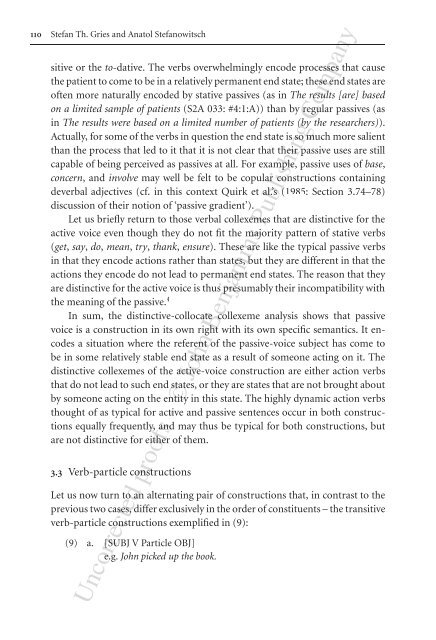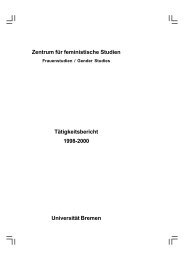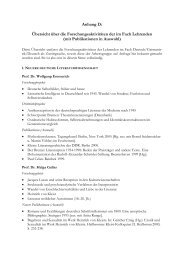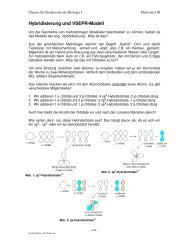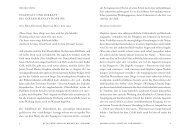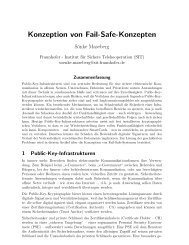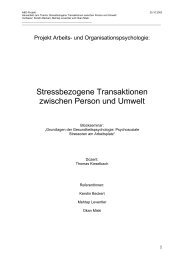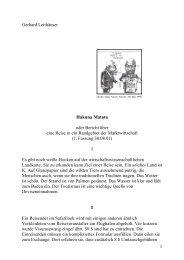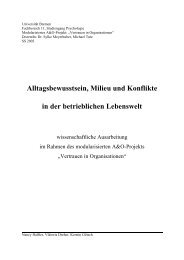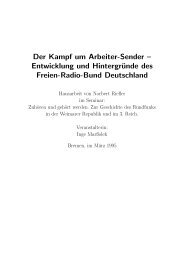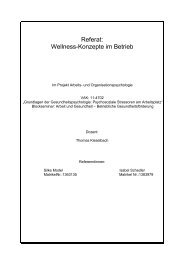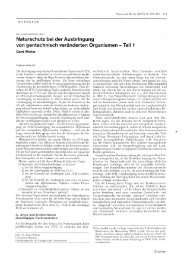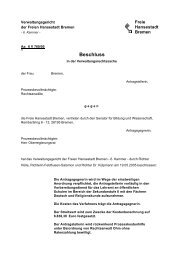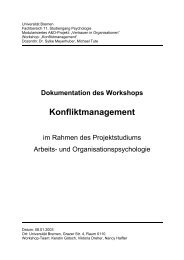Extending collostructional analysis - www-user
Extending collostructional analysis - www-user
Extending collostructional analysis - www-user
You also want an ePaper? Increase the reach of your titles
YUMPU automatically turns print PDFs into web optimized ePapers that Google loves.
110 Stefan Th. Gries and Anatol Stefanowitsch<br />
sitive or the to-dative. The verbs overwhelmingly encode processes that cause<br />
the patient to come to be in a relatively permanent end state; these end states are<br />
often more naturally encoded by stative passives (as in The results [are] based<br />
on a limited sample of patients (S2A 033: #4:1:A)) than by regular passives (as<br />
in The results were based on a limited number of patients (by the researchers)).<br />
Actually, for some of the verbs in question the end state is so much more salient<br />
than the process that led to it that it is not clear that their passive uses are still<br />
capable of being perceived as passives at all. For example, passive uses of base,<br />
concern, andinvolve may well be felt to be copular constructions containing<br />
deverbal adjectives (cf. in this context Quirk et al.’s (1985: Section 3.74–78)<br />
discussion of their notion of ‘passive gradient’).<br />
Let us briefly return to those verbal collexemes that are distinctive for the<br />
active voice even though they do not fit the majority pattern of stative verbs<br />
(get, say, do, mean, try, thank, ensure). These are like the typical passive verbs<br />
in that they encode actions rather than states, but they are different in that the<br />
actions they encode do not lead to permanent end states. The reason that they<br />
are distinctive for the active voice is thus presumably their incompatibility with<br />
the meaning of the passive. 4<br />
In sum, the distinctive-collocate collexeme <strong>analysis</strong> shows that passive<br />
voice is a construction in its own right with its own specific semantics. It encodes<br />
a situation where the referent of the passive-voice subject has come to<br />
be in some relatively stable end state as a result of someone acting on it. The<br />
distinctive collexemes of the active-voice construction are either action verbs<br />
that do not lead to such end states, or they are states that are not brought about<br />
by someone acting on the entity in this state. The highly dynamic action verbs<br />
thought of as typical for active and passive sentences occur in both constructions<br />
equally frequently, and may thus be typical for both constructions, but<br />
are not distinctive for either of them.<br />
3.3 Verb-particle constructions<br />
Let us now turn to an alternating pair of constructions that, in contrast to the<br />
previous two cases, differ exclusively in the order of constituents – the transitive<br />
verb-particle constructions exemplified in (9):<br />
(9) a. [SUBJ V Particle OBJ]<br />
e.g. John picked up the book.<br />
Uncorrected proofs - © John Benjamins Publishing Company


